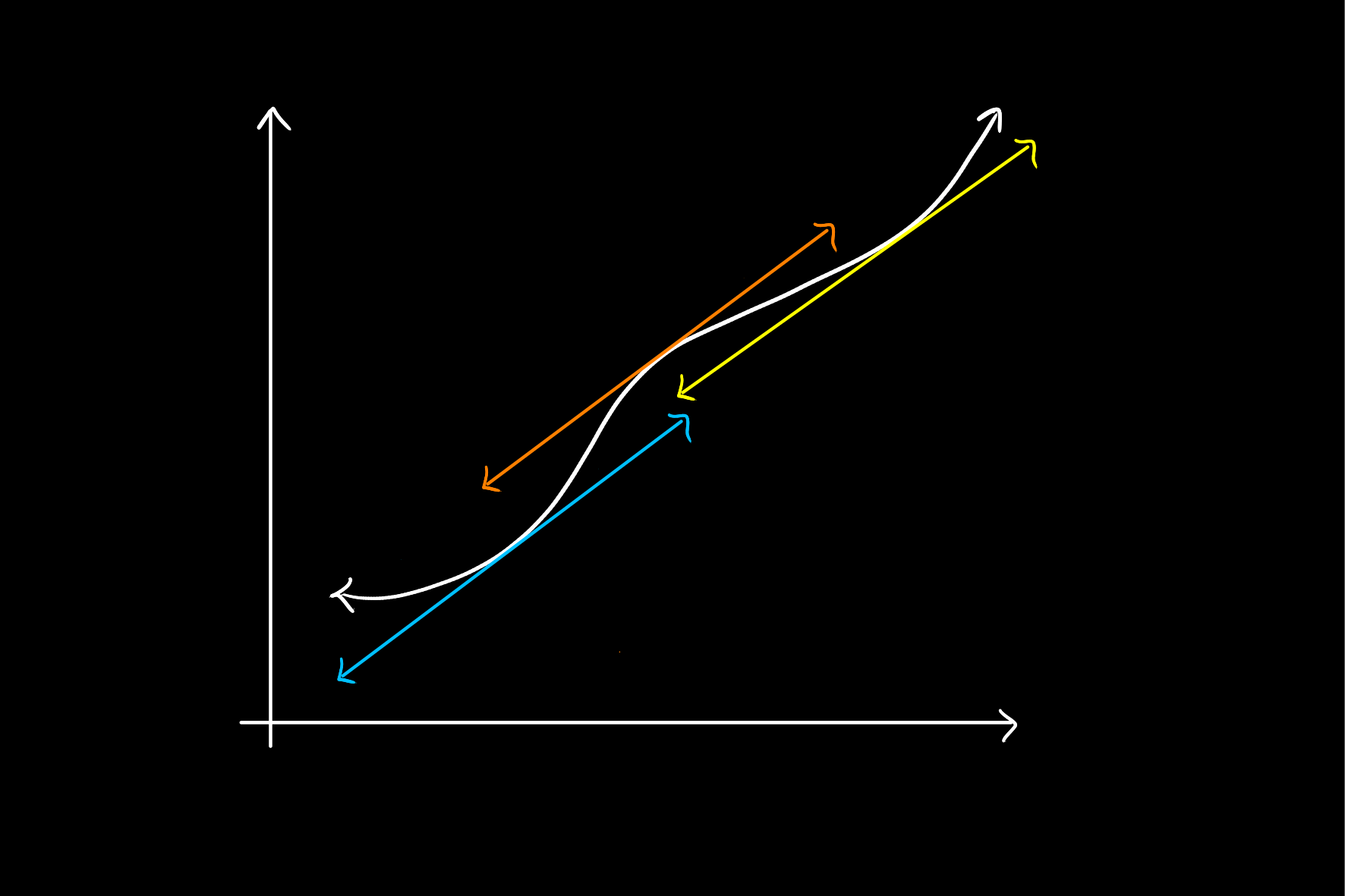Monotonicity and Sign of Derivative
If the sign of the derivative of a real function is unchanging, the function is monotonic, either increasing or decreasing depending on the sign. This should be intuitive from the way the derivative is defined, since a positive derivative at all points on some interval corresponds with an increasing tangent at all such points.

If
That is
Proof
Because differentiability implies continuity, given that
Applying the mean value theorem to
Given that
If
That is
If
That is
If
That is